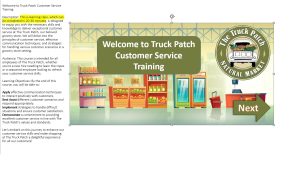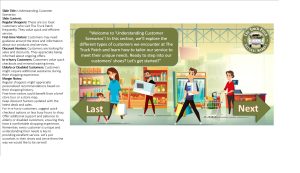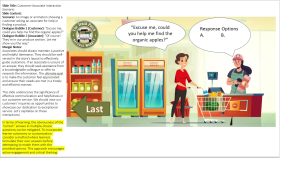The storyboard is a crucial representation of the first “D” in the ADDIE model, which stands for Analysis. During the Analysis phase, instructional designers gather comprehensive information to understand the learning needs, objectives, and constraints of a project. This phase sets the foundation for the entire instructional design process.
In creating a storyboard, the analysis is reflected in several ways:
- Identifying Learning Objectives: The storyboard outlines the specific learning goals that were identified during the analysis phase. It clearly shows what learners are expected to know or be able to do by the end of the instruction.
- Defining the Target Audience: Information about the learners’ characteristics, such as their prior knowledge, skills, and learning preferences, is integrated into the storyboard. This ensures that the instructional content is tailored to meet the needs of the target audience.
- Determining Content Scope: The storyboard delineates the scope of the content to be covered, which is based on the analysis of what is necessary for achieving the learning objectives. It helps in organizing and structuring the content logically.
- Planning Assessment Strategies: The storyboard includes the types of assessments that will be used to measure learners’ progress and achievement of the objectives. These assessments are designed based on the criteria established during the analysis phase.
- Mapping Out Instructional Strategies: The storyboard visualizes the instructional strategies and activities that will be used to engage learners. These strategies are selected based on the analysis of what methods will be most effective for the given audience and content.
- Considering Constraints and Resources: Any constraints such as time, budget, technology, and other resources identified during the analysis are taken into account in the storyboard. This ensures that the design is feasible and practical.
By incorporating these elements, the storyboard acts as a bridge between the Analysis phase and the subsequent Design phase, ensuring that the instructional design is grounded in a thorough understanding of the learners’ needs and the project’s requirements.
Title: Truck Patch Customer Service Guide
In this project, we will be going over the importance and implementation of best practices regarding customer service. This E-Learning Modul will be in we will break it down into three segments to minimize cognitive load. First will be how to greet the different customers and recognize their individual needs based on little more than body language and a warm greeting. Second will be a section going over dietary restrictions and how to point customers in the right direction to find what they may need. Last will be an assessment to gauge the retention of the learners on the topics from sections one and two by giving different scenarios with real-life examples of customers and a pic your own adventure style of branching scenarios. The interactions will have feedback given at the end on how the learner could improve based on their responses.
This project was revised and feedback was made on how to improve the overall experience for the end users.
Some suggestions included:
• The answer selection from multiple choice can make the “right” answer seem obvious. To add in some learner control or possibly customization is there a way to mix responses where the learner must develop what they think the answer is and then try to match it?
• Timing sequence to give an estimate of how long each exercise/scenario should take or for example is the overall training meant to be 20-30 min in length etc. This would help with pacing or allowing the learner to anticipate their progress.
• The assessment screen seems to combine from several areas so the text all together makes the visual a bit dense. Separating the assessment areas with a subheader or a subsection across two different slides or on the same slide with more spacing could help organize the content so the learner can absorb the information with more ease.



Brad_Downey-Wk8-Prototype



